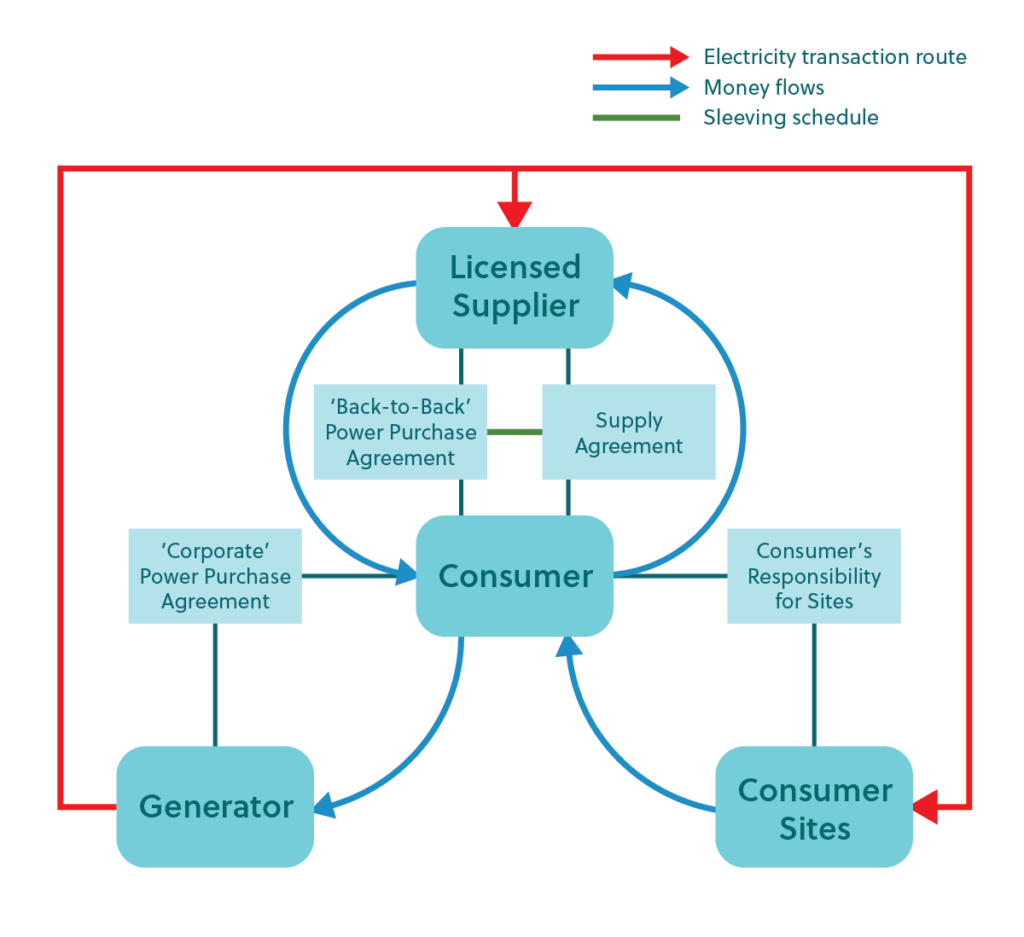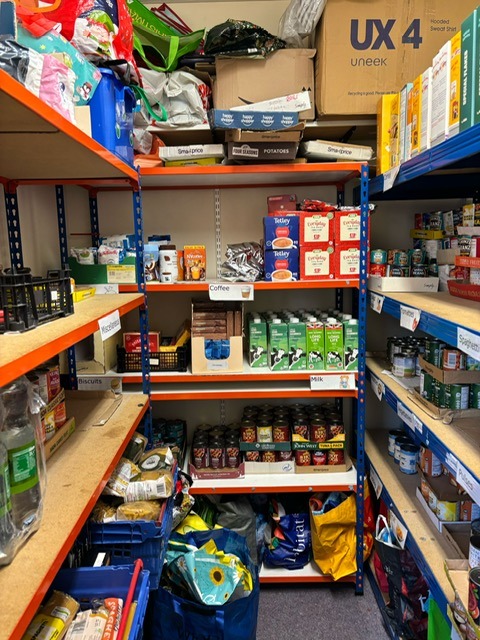If you’re looking for a way to buy, sell or invest in green energy from a specific source, you might be interested in sleeving energy.
What is sleeving?
Put simply, sleeving energy is a process of directly trading energy from a specific source of renewable energy such as a solar farm or a wind turbine to a buyer through a utility supplier.
Buying green energy to help avoid market fluctuations
By choosing Sleeving instead of buying electricity from the wholesale market, where you don’t know who is producing the electricity, how they’re doing it and what their technology type is, you have a direct arrangement with a green energy generator that produces renewable energy. This way, you can support renewable energy projects, reduce your carbon footprint and lock in a fixed price for your electricity supply, helping to avoid market fluctuations and manage your budget better.
How does sleeving energy work?
Sleeving energy involves three parties:
- the buyer, the party that purchases the renewable energy
- the generator, the party that produces the electricity from a renewable source, and the;
- utility supplier, the party that delivers the electricity from the generator to the buyer, usually through the public grid.

The buyer and the generator sign a corporate Power Purchase Agreement (cPPA), which is a contract that specifies the amount, price, and duration of the electricity trade.
A utility Power Purchase Agreement (uPPA) is also signed with the utility supplier, either directly with the generator or via the buyer, which is a contract that enables the trade of electricity from the generator to the buyer’s utility supply agreement. The utility supplier acts as a facilitator and buys the energy directly from the renewable generator and ‘sleeves’ (sells) it to the buyer, for a fee.
This process of transferring electricity from the generator to the buyer’s supply agreement is called ‘sleeving’. Sleeving is like a triangle: you have your supply agreement, which is your normal contract with your electricity supplier. You also have your corporate Power Purchase Agreement (cPPA), which is your contract with the renewable energy generator. And then you have your utility Power Purchase Agreement (UPPA), which is the contract between the generator/buyer and the supplier that enables sleeving.
How to manage seasonal fluctuations in renewable energy
Sleeving energy may seem simple, but it can be complex. You have to consider how much electricity the generator is producing, and how that affects your electricity consumption.
For instance, for your public sector organisation, you might have a relatively steady or flat demand for electricity throughout the year, with a slight increase in winter. But if you sign a PPA with a solar generator, you will get more electricity from the PPA in summer than in winter. This means that you will have a greater proportion of your demand covered by the PPA in summer and less in winter. This can affect how you buy the remainder of your electricity, your overall costs and the savings from sleeving which is where it becomes more complex.
That’s where LASER can help, our team of experts can help you deal with this mismatch by actively managing the trading of your electricity requirement in the market.
What are the benefits and challenges of sleeving energy?
Sleeving energy has several benefits for both buyers and generators. Let’s first look at the benefits and challenges for buyers.
For buyers, sleeving energy can help them:
- Reduce their exposure to volatile wholesale market prices and regulatory changes.
- Enhance their reputation and brand image by demonstrating their commitment to sustainability and social responsibility.
- Meet their environmental targets and obligations by reducing their greenhouse gas emissions and increasing their renewable energy consumption.
The challenges are:
- Matching their electricity demand with the generator’s output, which can vary depending on weather conditions and seasons.
- Managing the residual demand or supply that is not covered by the PPA, which can be more expensive or difficult to procure.
- Negotiating and managing complex contracts with multiple parties, which can require legal and technical expertise.
- Monitoring and verifying the origin and quality of the electricity, which can require certification and auditing.
- Finding a supplier who can facilitate the sleeving of electricity from the generator to the buyer.
- Competing with other ‘Buyers’ in a competitive and increasingly popular market.
Now let’s examine both for generators. Sleeving energy can help them:
- Secure a long-term revenue stream by selling their electricity directly to buyers.
- Access new markets and customers.
- Attract investment and financing by showing their financial viability and stability.
However the challenges can include:
- Facing high initial costs for setting up and installing the renewable energy system.
- Finding suitable buyers who are willing to pay a fair price for their electricity.
- Delivering reliable and consistent electricity to meet the buyer’s expectations.
- Complying with regulatory standards and obligations, which can vary across regions and countries.
- Ever decreasing availability of grid capacity.
If you are considering owning and running a renewable asset stay tuned for our next blog as we will delve deeper into what to think about, the challenges of this ownership and how we can help you overcome them.





